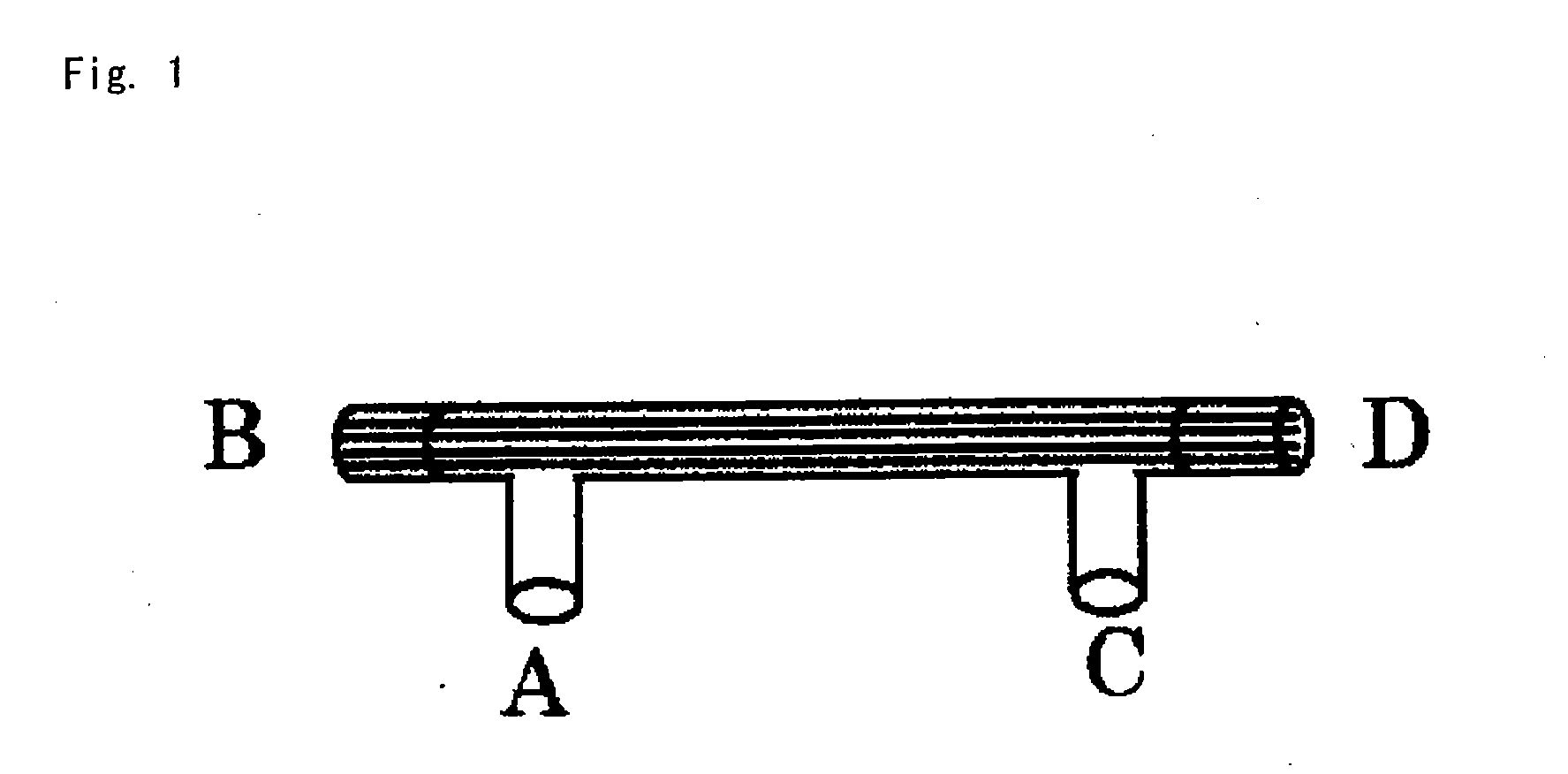Separation membrane and method for producing the same
a separation membrane and membrane technology, applied in the field of separation membranes, can solve the problems of reducing permeability, difficulty in meeting high permeability, and void ratio inside the membrane becomes lower, and achieves excellent chemical and physical strength, high pure water permeability, and high virus removal performance.
- Summary
- Abstract
- Description
- Claims
- Application Information
AI Technical Summary
Benefits of technology
Problems solved by technology
Method used
Image
Examples
example 1
[0108]A vinylidene fluoride homopolymer having a weight average molecular weight of 417,000 (38% by weight) and 62% by weight of γ-butyrolactone were dissolved at 160° C. This polymer solution and an aqueous 85% by weight γ-butyrolactone solution were simultaneously ejected through an outer tube of a double co-extrusion head and an inner tube of the double co-extrusion head, respectively, and then the solutions were solidified in a bath of an aqueous 85% by weight γ-butyrolactone solution at a temperature of 10° C. The obtained membrane was stretched in water at 90° C. by 1.5 times. The obtained membrane is a hollow fiber membrane having a spherical structure and this membrane was used as a support.
[0109]Next, 9.6% by weight of a polyvinylidene fluoride homopolymer having a melt viscosity of 6,400 Pa·s (Kynar® HSV900, manufactured by Arkema Inc.) and 2.4% by weight of a polyvinylidene fluoride homopolymer having a melt viscosity of 3,200 Pa·s (Kynar® 760, manufactured by Arkema Inc....
example 2
[0110]A polyvinylidene fluoride homopolymer having a melt viscosity of 6,400 Pa·s (Kynar® HSV900, manufactured by Arkema Inc.) (12% by weight) was dissolved in N-methyl-2-pyrrolidone to obtain a membrane-forming stock solution for a separation-functional layer. This membrane-forming stock solution was uniformly coated on the surface of the hollow fiber membrane obtained in Example 1 and then solidified in water at 23° C. to produce a hollow fiber-shaped separation membrane bearing a separation-functional layer having a three-dimensional network structure formed on a support layer having a spherical structure. The membrane structure and membrane performance of the obtained separation membrane are shown in Table 1.
example 3
[0111]A polyvinylidene fluoride homopolymer having a melt viscosity of 6,400 Pa·s (Kynar® HSV900, manufactured by Arkema Inc.) (9.6% by weight) and 2.4% by weight of a maleic anhydride-modified polyvinylidene fluoride homopolymer “manufactured by Arkema Inc., Kynar® ADX-111” were dissolved in N-methyl-2-pyrrolidone to obtain a membrane-forming stock solution for a separation-functional layer. This membrane-forming stock solution was uniformly coated on the surface of the hollow fiber membrane obtained in Example 1 and then solidified in water at 23° C. to produce a hollow fiber-shaped separation membrane bearing a separation-functional layer having a three-dimensional network structure formed on a support layer having a spherical structure. The membrane structure and membrane performance of the obtained separation membrane are shown in Table 1.
PUM
| Property | Measurement | Unit |
|---|---|---|
| Length | aaaaa | aaaaa |
| Length | aaaaa | aaaaa |
| Length | aaaaa | aaaaa |
Abstract
Description
Claims
Application Information
 Login to View More
Login to View More - R&D
- Intellectual Property
- Life Sciences
- Materials
- Tech Scout
- Unparalleled Data Quality
- Higher Quality Content
- 60% Fewer Hallucinations
Browse by: Latest US Patents, China's latest patents, Technical Efficacy Thesaurus, Application Domain, Technology Topic, Popular Technical Reports.
© 2025 PatSnap. All rights reserved.Legal|Privacy policy|Modern Slavery Act Transparency Statement|Sitemap|About US| Contact US: help@patsnap.com

